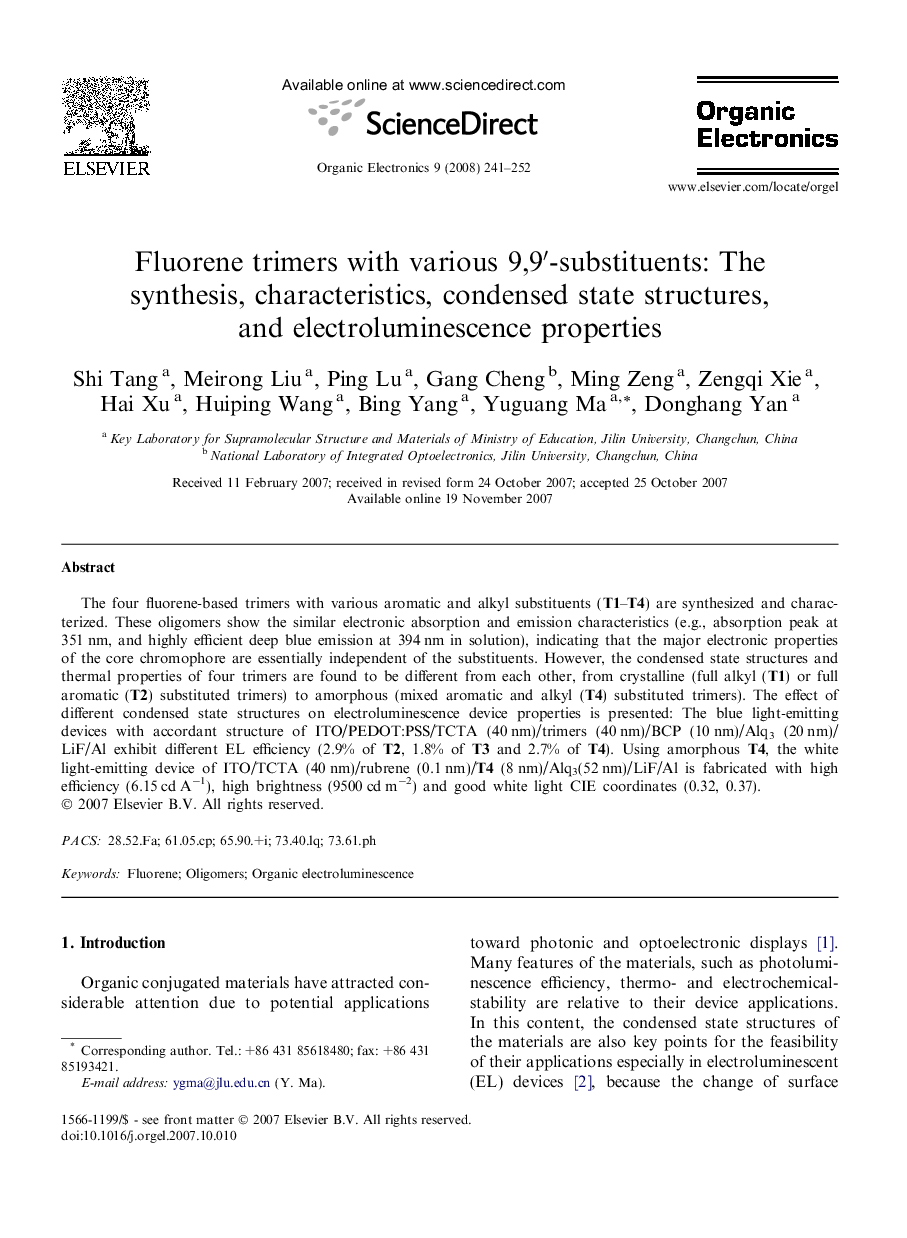| Article ID | Journal | Published Year | Pages | File Type |
|---|---|---|---|---|
| 1268412 | Organic Electronics | 2008 | 12 Pages |
The four fluorene-based trimers with various aromatic and alkyl substituents (T1–T4) are synthesized and characterized. These oligomers show the similar electronic absorption and emission characteristics (e.g., absorption peak at 351 nm, and highly efficient deep blue emission at 394 nm in solution), indicating that the major electronic properties of the core chromophore are essentially independent of the substituents. However, the condensed state structures and thermal properties of four trimers are found to be different from each other, from crystalline (full alkyl (T1) or full aromatic (T2) substituted trimers) to amorphous (mixed aromatic and alkyl (T4) substituted trimers). The effect of different condensed state structures on electroluminescence device properties is presented: The blue light-emitting devices with accordant structure of ITO/PEDOT:PSS/TCTA (40 nm)/trimers (40 nm)/BCP (10 nm)/Alq3 (20 nm)/LiF/Al exhibit different EL efficiency (2.9% of T2, 1.8% of T3 and 2.7% of T4). Using amorphous T4, the white light-emitting device of ITO/TCTA (40 nm)/rubrene (0.1 nm)/T4 (8 nm)/Alq3(52 nm)/LiF/Al is fabricated with high efficiency (6.15 cd A−1), high brightness (9500 cd m−2) and good white light CIE coordinates (0.32, 0.37).
